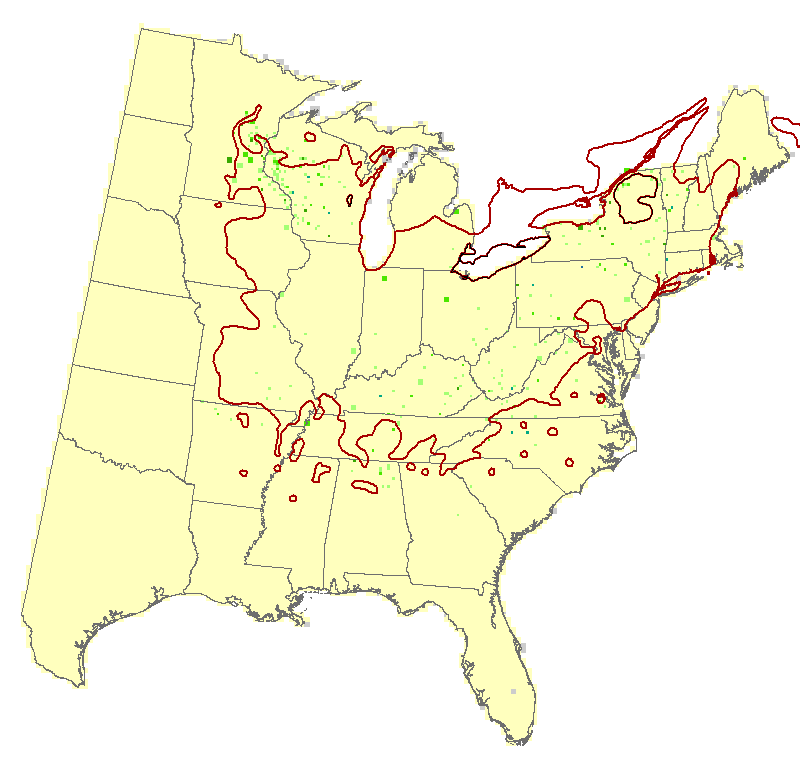butternut (Juglans cinerea)
Model Reliability: Current Distribution Only
Current Distribution Only
The model reliability (ModRel) for butternut was too low (< 0.14), therefore only the current Forest Inventory & Analysis distribution is shown.
| GCM SCENARIO | % Area Occ | Ave IV | Sum IV | Future/Current IV |
|---|---|---|---|---|
| Actual | 1 | 2.7 | 829 | N/A |
| RFimp | 1.1 | 1.1 | 374 | 0.45 |
| CCSM45 | 0.5 | 0.8 | 122 | 0.32 |
| CCSM85 | 0.3 | 0.6 | 59 | 0.16 |
| GFDL45 | 0.4 | 0.6 | 65 | 0.17 |
| GFDL85 | 0.3 | 0.5 | 43 | 0.11 |
| HAD45 | 0.4 | 0.7 | 70 | 0.19 |
| HAD85 | 0.2 | 0.6 | 43 | 0.11 |
| GCM45 | 0.7 | 0.4 | 86 | 0.23 |
| GCM85 | 0.4 | 0.4 | 48 | 0.13 |
Regional Summary Tree Tables
Summaries for tree species are available for a variety of geographies, in both PDF and Excel format. These summaries are based on Version 4 of the Climate Change Tree Atlas
Interpretation Guide
Butternut is very sparse (0.9% of area), with hardly any cells lighting up as present within FIA plots (even though Little shows a wide distribution across the northern half of the eastern US), and it has been declining due to canker disease. It's model was too unreliable to use for future habitat estimates. It also has low adaptability, so it may have additional issues with the future climate.
Family: Juglandaceae
Guild: opportunistic, short lived intolerant
Functional Lifeform: small to medium sized deciduous tree



